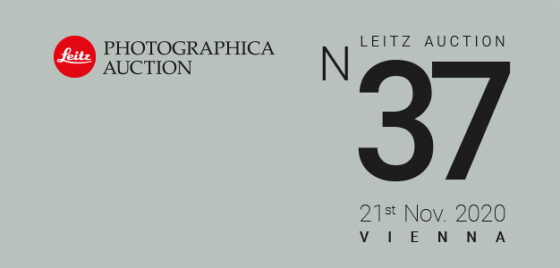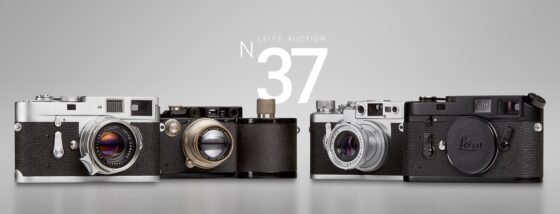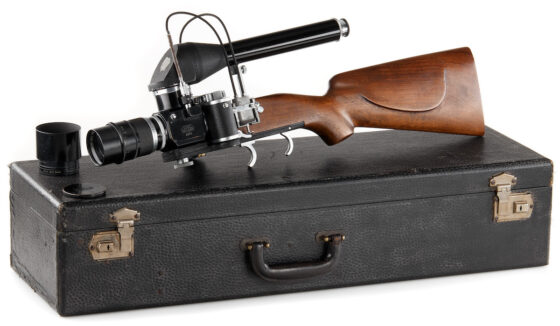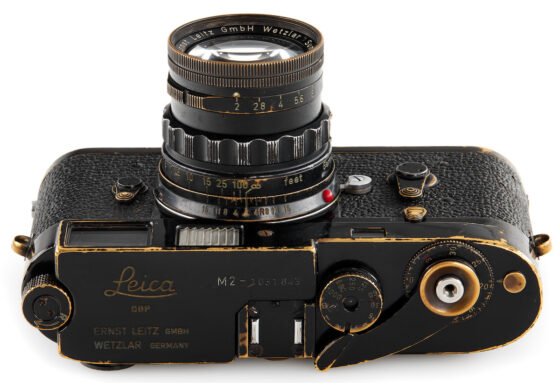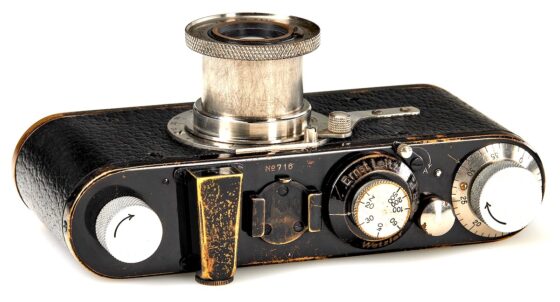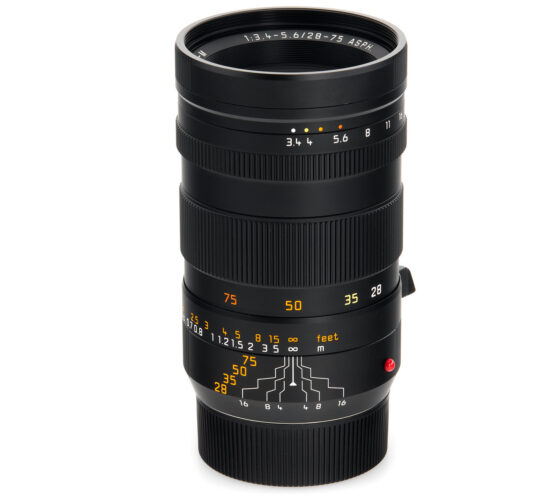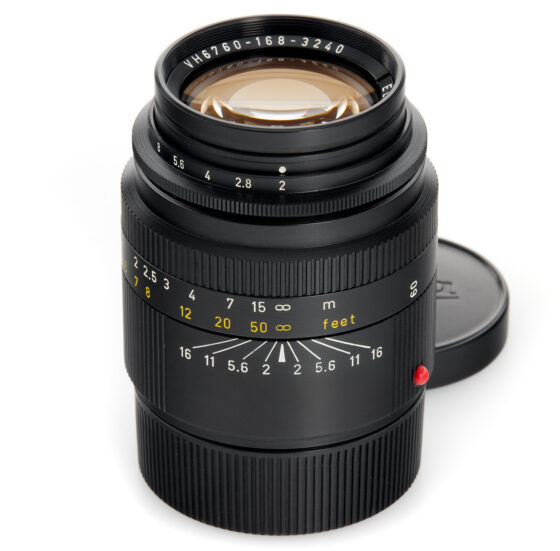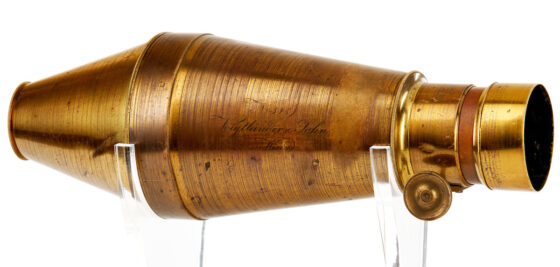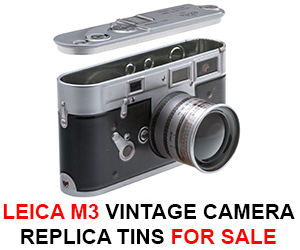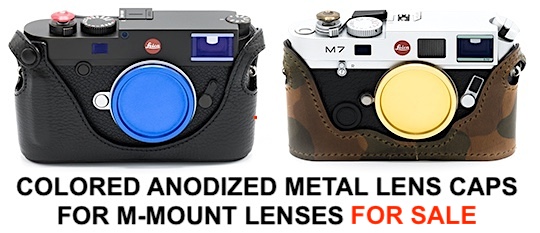The 37 Leitz Photographica Auction is coming on November 21st. Here are the Leica highlights from the upcoming auction:

E. Leitz New York Leica gun rifle
One of the rarest and most unusual Leica accessories in excellent, original condition. The Lot consists of the special viewfinder engraved with serial number 117 (see Lager VOL.III for no.116) and ‘E.LEITZ INC. NEW-YORK’, a modified PLOOT mirror housing no.2972, modified Leica IIIa no.230908 (1937), Telyt 4.5/20cm no.472827 (focusing scale in feet, with hood and cap) and an extremely rare carrying case RIFUN.
The company E. Leitz, Inc. New York launched the Leica Gun Rifle in 1938 using the codeword “Rifle”; it was only produced for one year (1938 to 1939). The “Rifle” was inspired by Commander Attilio Gatti, the well-known wildlife photographer in Africa and was developed between 1935 and 1937 by E. Leitz, Inc. New York, before being introduced to the public in July 1938. Various authors differ in their estimates about the actual numbers of “Rifles” produced: while P. H. Hasbroeck assumes that only six units were produced, J. L. Lager concludes that a dozen were made overall. We consider a number of 12-14 ‘Rifles’, spread out today over collections worldwide, to be appropriate and realistic.

Leica M2 Black Paint “Sarkis”
A very special Leica M2 black paint owned and used by the famous French conceptual artist Sarkis Zabunyan. The word ‘KRIEGSSCHATZ’ engraved on the back of the top plate is a keystone of numerous exhibitions and works of art of Sarkis. The camera comes with a brass-mount Summicron 2/50mm no.1474808. Included in this lot is a signed copy of the sought-after artbook ‘Blackout Leica Museum’ (Berlin, 1976, near-mint condition) and a letter of provenance.
Leica I Mod. A Elmax no.716
Very hard to find in this good, original and unrestored condition. The camera still shows all early features like the first version finder, early vulcanite, mushroom type shutter release, early base plate, low-profile aluminium knobs etc. A special opportunity for every Leica collector.

Vario-Elmar-M 3.5-5.6/28-75mm Asph. prototype
One of only three existing Vario-Elmar-M lenses. It has been designed in Germany in 2012 and was conceived as a universal lens replacing the Tri-Elmar 28-35-50. In contrast to the Tri-Elmar, the Vario-Elmar-M is a true zoom construction producing a sharp image also between the four hard stops. The production of the final-stage prototypes has been outsourced to Japan, but because of the complexity of the mechanical and optical design the project was cancelled in 2015. Only three lenses have been finished and met the quality standards set by Leica engineers. The lens bears the Leica order number 11669 and comes with a special screw-type prototype hood 12469. It is one of most special modern constructions from Leica.

Elcan 2/66MM
An extremely rare lens engraved with the military delivery number VH6760-168-3240. Less than 200 were made by Ernst Leitz Canada for the U.S. Navy. It was designed by Walter Mandler for ultra-high resolution and comprises of 9 glass elements in a robust, compact housing. The lens offered here is in beautiful and almost mint condition, with close to perfect optics. It is one of the best examples we have seen so far!
And one non-Leica item:
Voigtländer Daguerreotype camera
The Voigtländer Daguerreotype camera was introduced by Peter Wilhelm Friedrich Voigtländer (1812-1878) in 1840. It is historically important for its introduction of the fast f:3.7 Petzval lens – it was 15 times faster than the lenses Daguerre used in his constructions. The ‘cannon’-shaped camera is also one of the most sophisticated and recognizable constructions from the first days of photography.
The focusing screen is positioned at the widest part of the camera, and there is a magnifier in the shorter of the two cones to aid focusing. Once the picture was sharp, the photographer had to go into the darkroom and swap the focusing screen for a daguerreotype plate.
The offered example is in fine, original condition and it has never been restored. The lens is a matching Petzval-type construction.
Reportedly 600 of these cameras have been sold until 1842, only about ten are known to exist nowadays. This is the first time a camera of this type is offered in a public auction. It is of the most important cameras in the history of photography!
